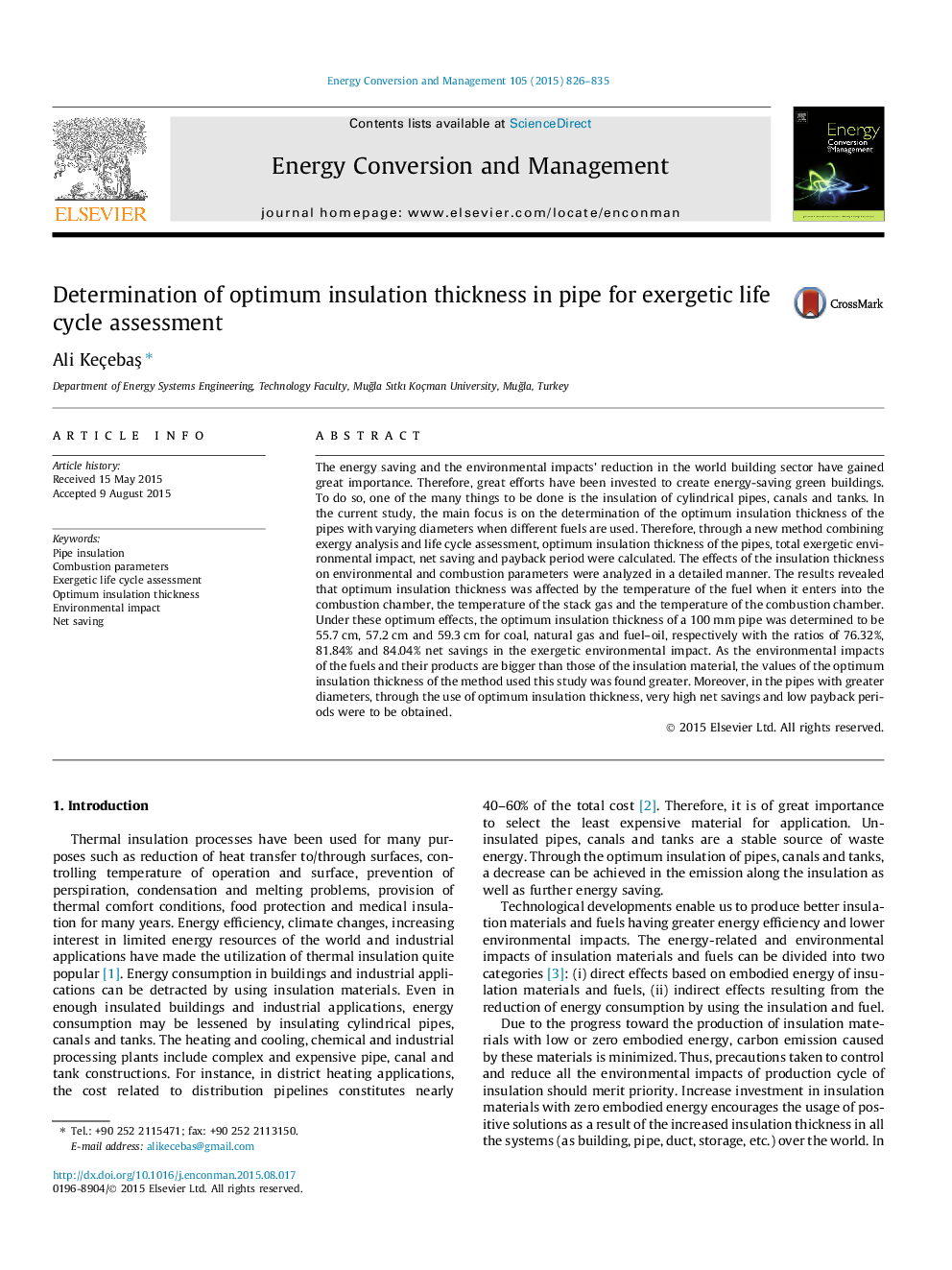| Article ID | Journal | Published Year | Pages | File Type |
|---|---|---|---|---|
| 7162050 | Energy Conversion and Management | 2015 | 10 Pages |
Abstract
The energy saving and the environmental impacts' reduction in the world building sector have gained great importance. Therefore, great efforts have been invested to create energy-saving green buildings. To do so, one of the many things to be done is the insulation of cylindrical pipes, canals and tanks. In the current study, the main focus is on the determination of the optimum insulation thickness of the pipes with varying diameters when different fuels are used. Therefore, through a new method combining exergy analysis and life cycle assessment, optimum insulation thickness of the pipes, total exergetic environmental impact, net saving and payback period were calculated. The effects of the insulation thickness on environmental and combustion parameters were analyzed in a detailed manner. The results revealed that optimum insulation thickness was affected by the temperature of the fuel when it enters into the combustion chamber, the temperature of the stack gas and the temperature of the combustion chamber. Under these optimum effects, the optimum insulation thickness of a 100Â mm pipe was determined to be 55.7Â cm, 57.2Â cm and 59.3Â cm for coal, natural gas and fuel-oil, respectively with the ratios of 76.32%, 81.84% and 84.04% net savings in the exergetic environmental impact. As the environmental impacts of the fuels and their products are bigger than those of the insulation material, the values of the optimum insulation thickness of the method used this study was found greater. Moreover, in the pipes with greater diameters, through the use of optimum insulation thickness, very high net savings and low payback periods were to be obtained.
Keywords
Related Topics
Physical Sciences and Engineering
Energy
Energy (General)
Authors
Ali KeçebaÅ,
